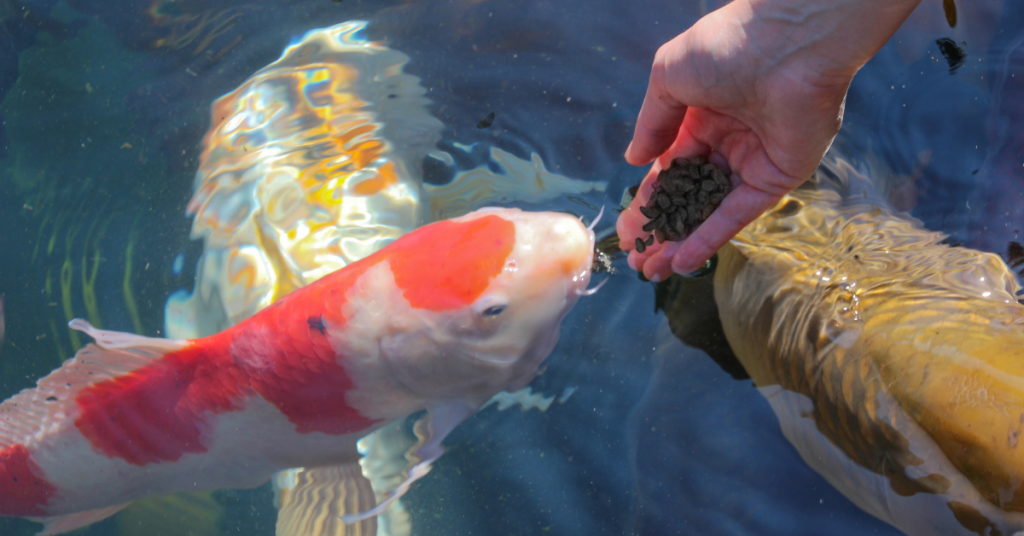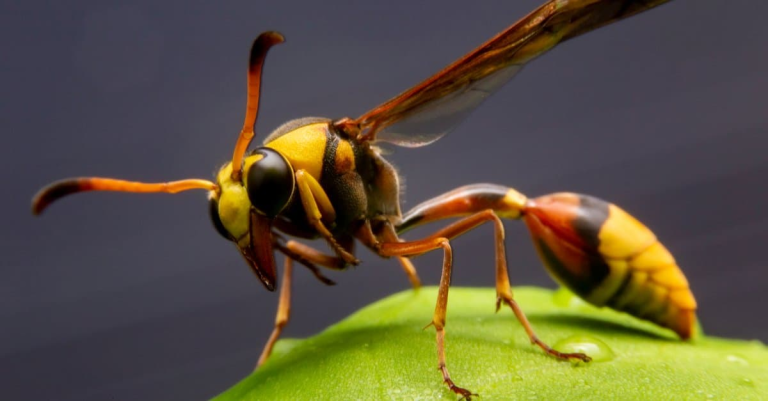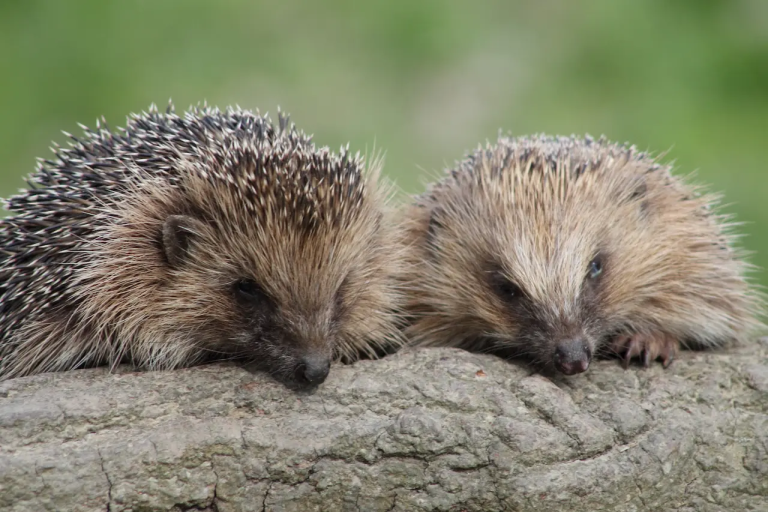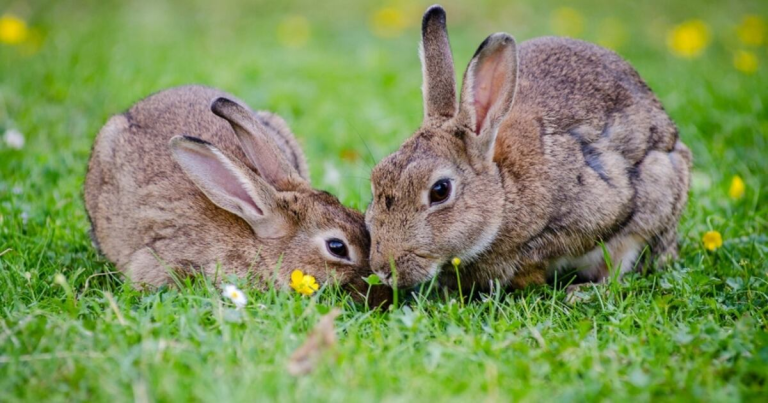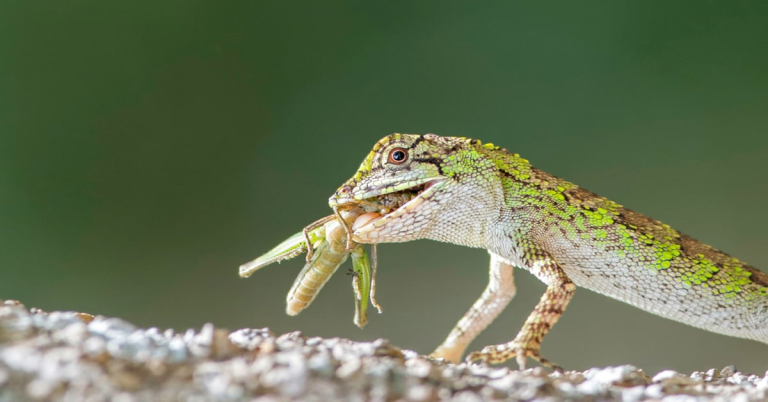What Do Koi Fish Eat? (Full Expert Guide + 15 Foods They Love)
If you’ve ever wondered what do koi fish eat, you’re not alone. Koi are one of the most popular ornamental fish in ponds worldwide, admired for their vibrant colors, graceful swimming, and longevity. But keeping koi healthy and vibrant goes far beyond just filling a pond with water. Their diet plays a critical role in growth, color enhancement, immunity, and overall well-being.
In the wild, koi are opportunistic omnivores. They graze on insects, worms, larvae, algae, aquatic plants, and even small crustaceans. In captivity, recreating this natural variety ensures that koi thrive, display their full coloration, and remain active year-round. Feeding koi the wrong foods—or sticking to a monotonous diet—can lead to nutritional deficiencies, poor growth, or even illness.
This guide dives into the 15 safe and nutritious foods koi fish can eat, along with tips, seasonal feeding advice, and FAQs. Whether you’re a beginner koi keeper or an experienced pond enthusiast, you’ll discover how to provide a balanced, expert-approved diet that keeps your koi healthy, happy, and stunningly colorful.
Short Answer
Koi fish are omnivores and eat pellets, insects, worms, fruits, vegetables, algae, and small aquatic animals. A healthy koi diet should combine high-quality pellets with natural treats like shrimp, peas, worms, and fruits.
15 Foods Koi Fish Can Eat (Expert-Approved List)
Below là danh sách chi tiết nhất, có lợi ích, cách cho ăn, và các lưu ý rủi ro cho từng loại.
1. High-Quality Koi Pellets (Daily Staple)
High-quality koi pellets are widely regarded as the most balanced and reliable staple food for koi fish, both in ponds and aquariums. They are specifically formulated to provide all the essential nutrients koi need for growth, vibrant coloration, and overall health, making them a cornerstone of any koi feeding regimen.
Why Pellets Are Essential
Koi pellets are carefully balanced to include:
- Protein (28–40%) – Supports muscle growth, tissue repair, and energy for swimming and active behavior. Young koi and growing fish require higher protein levels, especially during warmer months when metabolism is faster.
- Carbohydrates – Provide a steady energy source without overloading the digestive system.
- Minerals – Essential for bone development, proper scale formation, and overall cellular functions. Calcium, phosphorus, and trace elements are included to prevent deficiencies.
- Spirulina – A natural algae-based pigment that enhances red, orange, and gold hues in koi. Regular feeding can significantly improve color vibrancy and intensity.
- Wheat Germ – A highly digestible ingredient that promotes healthy digestion, especially important during colder months when koi metabolism slows down.
Feeding Tips
- Seasonal adjustments: Use high-protein growth pellets during warm months (spring and summer) to support rapid growth, active swimming, and energy expenditure. Switch to wheat-germ pellets in autumn and winter to aid digestion and prevent stress during colder periods when koi metabolism naturally slows down.
- Floating pellets: Floating pellets allow you to monitor how much your koi are eating, helping prevent overfeeding and water pollution. Observing feeding behavior also gives early signs of illness if koi are reluctant to eat.
- Portion control: Only feed what koi can finish in 3–5 minutes to avoid leftover pellets fouling the pond. Uneaten pellets decompose quickly and can deteriorate water quality.
Additional Expert Tips
- Rotate pellet brands occasionally to ensure nutrient variety and prevent deficiencies.
- Store pellets in airtight containers to maintain freshness and prevent nutrient loss.
- Avoid low-quality or generic fish food, as it often lacks essential vitamins and may contain fillers harmful to koi long-term.
- Combine pellets with natural treats like vegetables, fruits, or worms for a balanced, stimulating diet.
By making high-quality pellets the foundation of your koi’s diet, you ensure a healthy, well-nourished, and visually stunning pond. They provide consistency and convenience while forming the base for a more varied and enriching feeding plan.
2. Earthworms
Earthworms are one of the most natural and protein-rich treats koi fish can enjoy. In the wild, koi often forage at the pond bottom, consuming worms and larvae as a primary protein source. Offering earthworms in captivity not only mimics this natural behavior but also provides essential nutrients that promote healthy growth and vibrant coloration.
Nutritional Benefits
- High-quality protein – Supports muscle development, energy for active swimming, and overall growth.
- Minerals and micronutrients – Worms are naturally rich in minerals like calcium, magnesium, and iron, supporting skeletal health and metabolic processes.
- Easy digestion – Soft-bodied worms are gentle on koi digestive systems, making them ideal for both young and adult fish.
- Omega fatty acids – Present in small amounts, these help maintain healthy skin, scales, and immune function.
Feeding Tips
- Frequency: Feed earthworms 1–2 times per week as a supplement, not a staple, to prevent overfeeding or water contamination.
- Size matters: Use appropriately sized worms for your koi. Small or medium worms are best for juveniles, while larger koi can handle bigger worms.
- Preparation: Rinse worms thoroughly with pond water to remove soil and potential contaminants before feeding.
- Observation: Introduce worms slowly at first. Koi are instinctive feeders, and some may require time to recognize new foods.
Additional Expert Tips
- Freeze or refrigerate excess worms to keep them fresh, but avoid chemical preservatives.
- Live vs. frozen: Live worms stimulate natural foraging behavior, while frozen worms are a convenient, safe alternative that reduces parasite risk.
- Combine with other foods: Pair worms with high-quality pellets or vegetables for a balanced, nutrient-rich diet.
By incorporating earthworms into your koi feeding routine, you provide a natural protein source that supports growth, digestive health, and the overall vitality of your pond fish.
3. Shrimp (Fresh or Dried)
Shrimp are a highly nutritious and color-enhancing treat for koi fish. Both fresh and properly prepared dried shrimp provide essential nutrients while mimicking the natural prey koi would find in the wild. One of the standout benefits of shrimp is the presence of astaxanthin, a powerful carotenoid pigment that enhances the red and orange coloration of koi, making them appear more vibrant and visually striking.
Nutritional Benefits
- Astaxanthin: Enhances natural red, orange, and gold colors, supporting your koi’s aesthetic appeal.
- Protein: Provides high-quality protein essential for muscle development, growth, and energy.
- Omega-3 fatty acids: Support heart, skin, and scale health, as well as overall immune function.
- Minerals and vitamins: Contribute to strong bones, proper metabolic function, and overall vitality.
Feeding Tips
- Preparation: Chop shrimp into bite-sized pieces to make them easy for koi to consume.
- Frequency: Use shrimp 1–2 times per week as a treat or color enhancer. Overfeeding can increase fat content in the pond water.
- Avoid salted or seasoned shrimp: Salt and additives can be harmful to koi, leading to dehydration or digestive stress.
- Observation: Koi naturally forage, so introducing shrimp gradually helps them recognize it as food if they are not used to this type of treat.
Additional Expert Tips
- Live vs. dried: While live shrimp encourage natural hunting behaviors, freeze-dried shrimp are convenient, safe, and retain most nutrients.
- Combine with pellets: Pair shrimp feeding with high-quality pellets to ensure a balanced, well-rounded diet.
- Storage: Keep dried shrimp in airtight containers in a cool, dry place to preserve freshness and prevent nutrient loss.
By including shrimp in your koi feeding regimen, you not only offer a delicious treat but also support enhanced coloration and overall health, making it a favorite among pond enthusiasts who want their koi to look their absolute best.
4. Crickets
Crickets are an excellent protein-rich treat for koi fish that also provide mental stimulation and mimic natural foraging behavior. In the wild, koi opportunistically feed on insects at the water surface, and crickets allow them to engage in this instinctive feeding behavior even in a pond environment.
Nutritional Benefits
- High-quality protein: Supports muscle development, growth, and energy levels for active swimming.
- Vitamins and minerals: Crickets contain trace minerals like calcium, magnesium, and phosphorus, supporting bone health and metabolic functions.
- Chitin: The exoskeleton provides a small amount of dietary fiber, aiding digestion.
- Fat content: Moderate, which is safe for adult koi but should be considered for frequent feeding.
Feeding Tips
- Quantity: Feed crickets sparingly as a supplement to a staple pellet diet. 1–2 times per week is usually sufficient.
- Size: Use appropriately sized crickets for your koi. Juvenile koi require smaller crickets to avoid choking or digestive issues.
- Preparation: Rinse live crickets thoroughly with pond water to remove potential dirt or contaminants.
- Observation: Koi may initially ignore crickets. Drop them near the water surface in small numbers to allow koi to recognize them as food.
Additional Expert Tips
- Avoid wild-caught crickets: These may carry pesticides, parasites, or other contaminants that could harm your koi.
- Live vs. dried: Live crickets encourage natural hunting behavior, whereas freeze-dried or dehydrated crickets provide convenience and lower parasite risk.
- Rotation: Combine crickets with other treats such as worms, shrimp, or bloodworms to ensure dietary variety and prevent nutrient imbalance.
Crickets not only enhance the diet nutritionally but also stimulate natural foraging instincts, contributing to the koi’s overall health, activity levels, and enjoyment in the pond environment.
5. Mealworms
Mealworms are a popular protein-rich treat for koi fish, offering a slightly different texture and nutrient profile compared to crickets and shrimp. They are the larval form of the darkling beetle and are widely used in aquaculture and ornamental fish feeding because they are high in protein and fat, making them ideal for growth and energy, especially for young or underweight koi.
Nutritional Benefits
- Protein: Supports muscle development, active swimming, and overall growth.
- Fat content: Provides energy for koi, though it is higher than in crickets or shrimp, so moderation is key.
- Chitin: The exoskeleton contributes a small amount of fiber, aiding digestion and maintaining gut health.
- Minerals: Mealworms contain trace minerals like calcium, magnesium, and potassium, supporting bone health and metabolic function.
Feeding Tips
- Moderation: Due to their higher fat content, feed mealworms sparingly, 1–2 times per week. Excessive feeding can lead to obesity and water quality issues.
- Size: Chop or use appropriately sized mealworms for juvenile koi to prevent choking or digestive problems.
- Preparation: Rinse mealworms with clean water before feeding to remove dust or substrate from storage.
- Rotation: Alternate with other protein sources like crickets, earthworms, or bloodworms for balanced nutrition.
Additional Expert Tips
- Treat, not staple: Mealworms should be considered a supplemental treat rather than a daily main food. Koi rely primarily on high-quality pellets for their balanced diet.
- Storage: Keep mealworms in a cool, dry environment to maintain freshness. Freeze-dried or refrigerated mealworms are safe and convenient alternatives.
- Observation: Monitor koi feeding behavior; some koi may prefer other treats, and introducing new foods gradually ensures acceptance.
Mealworms are especially beneficial for boosting protein intake during growth periods or when koi need extra energy. When used correctly, they enhance diet variety, stimulate natural foraging instincts, and contribute to healthy, vibrant koi in your pond.
6. 6. Lettuce
Lettuce is a safe and hydrating vegetable that koi fish enjoy nibbling on. It provides fiber, moisture, and mild nutrients, making it an excellent supplement to a pellet-based diet. While not highly nutrient-dense, lettuce is useful for digestive support and enrichment, allowing koi to mimic natural grazing behavior.
Nutritional Benefits
- Fiber: Helps regulate digestion and prevent constipation.
- Hydration: High water content supports overall hydration, especially in warm weather.
- Low calories: Safe as a frequent supplement without risk of obesity.
Feeding Tips
- Tear leaves into small floating pieces so koi can easily consume them.
- Feed lettuce occasionally, as a complement to high-protein foods.
- Remove uneaten pieces after 10–15 minutes to prevent water contamination.
Expert Tip
Combine lettuce with peas or boiled vegetables for balanced fiber intake and to keep koi active in the pond.
7. Peas (Shelled)
Peas are one of the most beneficial vegetables for koi, particularly for digestive health. They help prevent swim bladder problems, which can occur if koi are overfed or their diet is low in fiber.
Nutritional Benefits
- Fiber: Supports smooth digestion and prevents bloating.
- Protein: Provides a mild protein boost for koi without adding excess fat.
- Vitamins & Minerals: Rich in vitamin C, iron, and magnesium, promoting immune function and metabolic health.
Feeding Tips
- Preparation: Lightly boil peas and remove the outer skin before feeding.
- Frequency: 1–2 times per week, or as needed for digestive support.
- Size: Cut into small, bite-sized pieces for juvenile koi.
Expert Tip
Use peas to encourage picky eaters or koi recovering from illness, as they are easy to digest and gentle on the stomach.
8. Watermelon
Watermelon is a sweet, hydrating treat that koi fish love, especially during the hot summer months. Its high water content helps maintain hydration, while natural sugars provide a quick energy boost.
Nutritional Benefits
- Hydration: Over 90% water content helps koi stay hydrated.
- Natural sugars: Provides energy for swimming and activity.
- Vitamins: Contains vitamin A, C, and antioxidants that support immune health.
Feeding Tips
- Preparation: Remove seeds and cut into small, bite-sized chunks.
- Frequency: 1–2 times per week as a seasonal treat.
- Observation: Introduce gradually to avoid overfeeding sugar, which may cause digestive upset.
Expert Tip
Pair watermelon with other vegetables or pellets to maintain dietary balance and avoid spikes in sugar intake.
9. Oranges (Seedless)
Oranges are a vitamin C-rich fruit that koi enjoy nibbling on, offering both nutrition and enrichment. The bright color and sweet aroma attract koi and encourage natural foraging behavior.
Nutritional Benefits
- Vitamin C: Boosts immune function and overall health.
- Antioxidants: Help reduce oxidative stress, supporting longevity and vitality.
- Hydration: Adds moisture to the diet and encourages pond activity.
Feeding Tips
- Preparation: Remove seeds and cut oranges into small, floating pieces.
- Frequency: Offer occasionally, 1–2 times per week.
- Moderation: Fruits are high in sugar, so they should complement the primary pellet diet.
Expert Tip
Use oranges as a colorful enrichment treat for your koi, especially during training or when introducing new feeding routines.
110. Apples (Peeled)
Apples are a safe and nutritious fruit for koi, providing fiber, vitamins, and a mild natural sweetness that koi enjoy. They are best used as an occasional treat due to their sugar content.
Nutritional Benefits
- Fiber: Supports digestive health.
- Vitamins: Contains vitamin C and small amounts of B vitamins.
- Antioxidants: Help reduce oxidative stress and support overall vitality.
Feeding Tips
- Peel and slice apples into thin, manageable pieces.
- Offer once or twice per week as a supplement to the main diet.
- Remove uneaten pieces promptly to prevent water quality issues.
Expert Tip
Combine apple slices with vegetables like lettuce or peas for a balanced, fibrous snack that encourages natural foraging behavior.
11. Cooked Rice (Unsalted)
Cooked rice is an easy-to-digest carbohydrate source that koi can consume safely in moderation. It is not highly nutritious but can provide energy, especially for koi that need a quick energy boost.
Nutritional Benefits
- Carbohydrates: Provide energy for swimming and activity.
- Digestive ease: Soft texture is gentle on the koi’s digestive system.
Feeding Tips
- Serve plain, unsalted, and well-cooked rice in small portions.
- Avoid sticky rice or rice mixed with seasoning, as additives can harm koi.
- Feed occasionally, not as a staple food.
Expert Tip
Use cooked rice for koi recovering from illness or stress, as it is gentle and easy to digest while still providing energy.
12. Sweet Potato (Boiled)
Sweet potatoes are a nutritious, fiber-rich carbohydrate source that koi enjoy, especially when cooked and cut into small pieces. They support digestion, provide slow-release energy, and are easy for koi to nibble.
Nutritional Benefits
- Complex carbohydrates: Provide steady energy for activity.
- Fiber: Aids digestion and prevents constipation.
- Vitamins: Rich in vitamin A and antioxidants, supporting immune health and eye function.
Feeding Tips
- Boil sweet potatoes until soft and cut into small cubes.
- Feed sparingly, 1–2 times per week, as a supplement to protein and pellet diet.
- Remove leftovers to maintain water quality.
Expert Tip
Sweet potato pairs well with leafy greens or peas, creating a balanced vegetable snack for koi.
13. Bloodworms
Bloodworms are protein-rich aquatic larvae that mimic natural prey for koi, providing a high-quality protein boost. They are especially beneficial for juvenile koi, breeding koi, or koi needing weight gain.
Nutritional Benefits
- High protein: Supports growth and muscle development.
- Iron content: Beneficial for red coloration and overall health.
- Natural texture: Encourages hunting and foraging behavior.
Feeding Tips
- Offer frozen or freeze-dried bloodworms, avoiding live worms from unknown sources to reduce parasite risk.
- Feed in small quantities, 1–2 times per week.
- Observe koi during feeding to ensure all fish are consuming the treat.
Expert Tip
Rotate bloodworms with other protein sources like crickets, shrimp, or mealworms to provide nutritional variety.
14. Pond Algae
Pond algae is a natural grazing material that koi consume in the wild. It supports gut health, provides trace nutrients, and keeps koi mentally stimulated as they forage.
Nutritional Benefits
- Fiber: Promotes healthy digestion.
- Trace minerals: Supports metabolic and skeletal health.
- Behavioral enrichment: Mimics natural grazing patterns.
Feeding Tips
- Encourage natural algae growth in the pond, but avoid harmful blue-green algae, which can be toxic.
- Combine with pellets or vegetables for a balanced diet.
- Monitor algae consumption to ensure koi are also eating sufficient pellets for protein.
Expert Tip
Algae is best as a supplementary food, especially in outdoor ponds with natural growth, rather than the primary food source.
15. Insect Larvae
Insect larvae, such as mosquito larvae or small aquatic larvae, are a natural food source for koi, mimicking the fish’s wild diet. They provide protein, stimulation, and enrichment, promoting healthy feeding behavior.
Nutritional Benefits
- High protein: Essential for muscle growth and activity.
- Vitamins and minerals: Naturally occurring in larvae support overall health.
- Natural behavior stimulation: Koi actively hunt larvae, which encourages movement and activity.
Feeding Tips
- Feed small quantities as a supplement, 1–2 times per week.
- Ensure larvae are sourced from safe, pesticide-free environments.
- Observe koi feeding behavior to prevent aggression or competition.
Expert Tip
Insect larvae are an excellent live treat, but they should be rotated with other protein and vegetable sources to maintain a balanced diet.
Foods Koi Should Not Eat
To protect koi health:
❌ Bread (causes bloat)
❌ Processed human foods
❌ Avocado (toxic)
❌ Raw meat
❌ Chocolate (toxic)
❌ Citrus seeds
❌ Dog/cat food (too high protein)
❌ RAW corn kernels
❌ High-fat foods
Seasonal Feeding Guide
Summer (25–30°C)
- Fast metabolism → feed 2–3×/day
- High-protein pellets + insects
Spring & Autumn (15–20°C)
- Reduce frequency
- Mix pellets + vegetables
Winter (<10°C)
- Metabolism slows dramatically
- Feed wheat germ lightly
- Below 5°C → stop feeding
Expert Tips for Feeding Koi
- ⭐ Feed what they can finish in 3–5 minutes
- ⭐ Vary the diet weekly to mimic natural behavior
- ⭐ Observe behavior—floating koi may be overeating
- ⭐ Remove uneaten food immediately
- ⭐ Avoid feeding during heavy rain or poor water quality
- ⭐ Use color-enhancing foods like shrimp & spirulina pellets
- ⭐ Quarantine live foods to avoid introducing parasites
FAQs About What Koi Fish Eat
1. Can koi fish eat bananas?
Yes, in very small mashed amounts. Not a regular food due to high sugar.
2. Do koi fish eat algae in the pond?
Yes. Koi naturally graze on algae, which supports digestion.
3. Can koi eat dog food or cat food?
Technically yes, but NOT recommended. The protein level is too high and may cause liver stress.
4. Do koi fish eat bread?
No. Bread causes bloating, digestive problems, and water pollution.
5. What is the best everyday food for koi?
A high-quality koi pellet with wheat germ and spirulina.
6. How long can koi survive without food?
Healthy koi can survive up to 14 days without food, depending on temperature.
7. Can koi eat raw vegetables?
Yes, but soft-boiled vegetables are safer and easier to digest.
Conclusion
Now you know exactly what koi fish eat and how to build a balanced diet using pellets, insects, vegetables, and fruits. The key to healthy koi is variety, quality, and seasonal feeding control. When fed properly, koi grow faster, live longer, and display brighter colors year-round.



